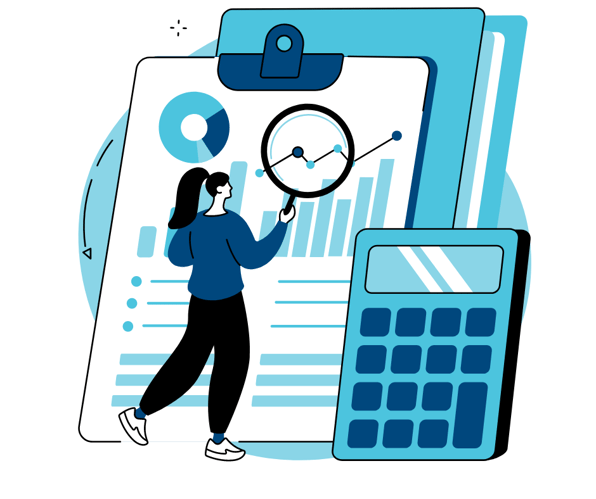
Customer satisfaction is now a top priority for e-tailers. Better customer satisfaction leads to customer loyalty, which, if everything goes well, means new orders. To reach this Holy Grail of business, you must constantly improve your operations and monitor three types of indicators:
- Customers
- Transport
- Logistics
In this article, you will find the key indicators relevant to post-purchase customer experience.
Customer satisfaction
Delivery promise
The delivery promise is not only a legal obligation (The Consumer Rights Act 2015) but also a major challenge for e-tailers, who have to indicate the delivery date at the beginning of the checkout process. However, that date must be calculated accurately:
- If it is too optimistic, the e-tailer runs the risk of disappointing their customer, which can have devastating consequences on loyalty.
- Too cautious, and the customer may abandon the order in favour of a competitor who offers faster delivery, at least on paper.
The delivery promise is an important criterion. If you don't respect it, you may lose your customers.
Once the delivery date has been specified, you should check whether the initial delivery promise has been kept. Achieving above 95% is considered satisfactory.
On the other hand, if the level falls below 90%, the e-tailer should review the calculation method and/or optimise their logistics and transport processes.
Ideally, the delivery promise should be readjusted according to potential problems in the post-purchase phase. They may be related to order confirmation, preparation or delivery. In such cases, calculating the fulfilment of the new delivery promise could be useful.
Click to possession
This indicator corresponds to the number of days between placing an order and the actual possession of the product by the customer. This measure must be monitored and not just analysed in isolation over a specific period of time.
Contact rate/WISMO
78% of online shoppers say they feel anxious after placing an order in an online shop. This is because the customer is in control of the process until they have paid for the order. But once they have made payment, they lose that control and await delivery. If the retailer does not reassure the customer by giving them the right information about the order, the customer will be tempted to contact customer service to obtain this information.
The contact rate, i.e., the number of incoming enquiries (e-mail, chat, telephone) per order, is an indicator that should be closely monitored. Your objective is to keep the rate as low as possible, because “WISMO” (Where is my order) calls are expensive (between €1 and €3 per contact) and can be a sign of anxiety or even irritation on the part of customers.
We find that 30–60% of WelcomeTrack clients' calls are about delivery. To reduce WISMO, you need to know as accurately as possible what causes those calls. Then, for each type of contact, you can implement an appropriate proactive communication by e-mail, SMS or through a tracking page. Once you have implemented these steps, you need to measure their impact on the contact rate and adapt the communication to reduce it.
Emails, SMS and the tracking page
The following indicators are to be addressed once the previous two have been optimised:
- Transactional e-mails open rates This rate tends to be quite high and ranges from 70% to 85%. Incorporating marketing content in these emails (offers, product recommendations, tutorials, etc.) can be a good idea.
- SMS open rate
- Impressions of the tracking page. Many e-tailers refer their customers to the carrier's tracking page. A branded page is a better option, as it allows you to extend the user experience and control the content.
All these customer relationship management KPIs and many more are available natively in WelcomeTrack.
Ces articles pourraient vous intéresser


10 best practices to improve your post-purchase communication
Once payment of online order is made, there will be a rupture between you and your customer. In...

E-logistics: how to control costs and optimise your transport budget?
As an e-tailer, you regularly ship orders. You are certainly aiming to control your flows and...
